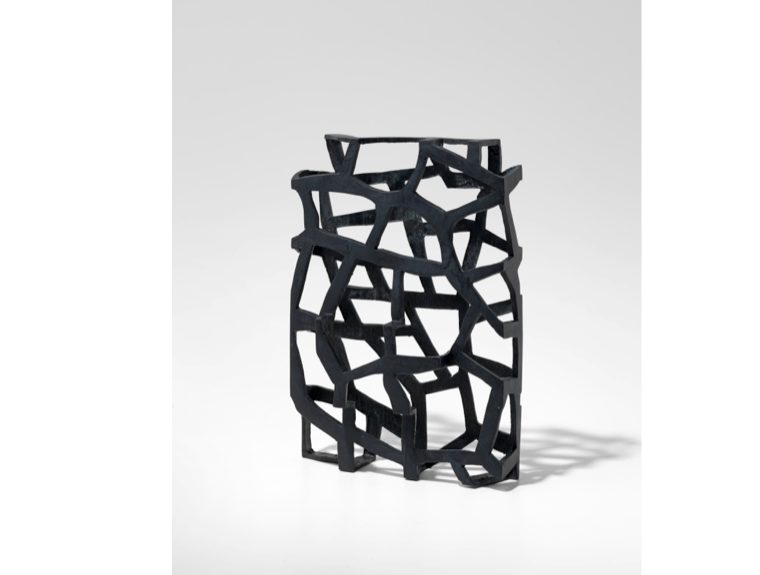[dropcap]P[/dropcap]i Artworks London announced Susan Hefuna’s third solo exhibition with the gallery and her first at our London venue. Cairotraces features a new series of her highly regarded works on paper as well as a newly commissioned palm wood installation.
At the core of Hefuna’s practice is her fascination with the networks and structures of connection that inhabit public spaces and become the framework for peoples’ interactions with each other. She is particularly interested in how these networks become visible through and influenced by architectural models and city planning. For Hefuna, these public spaces, particularly urban centres, are the intersection of politics, architecture, and history and they shape the formation of different social identities. This interest stems from the artists’ duel German – Egyptian heritage, which has allowed her to observe the towns and cities of two cultures that are simultaneously foreign and familiar to her as well as her nomadic existence as an artist who immerses herself in the life of the various countries she exhibits in.

Since the late 90’s, Hefuna has mimicked the visual traits of the mashrabiya screens of Cairo to visualise her anthropological inquiry into public spaces. Mashrabiyas are traditional latticework screens built out of interconnected knobs and rods that form unbroken, crosshatch patterns; they beautify buildings with arabesque ornamentation while protecting the inhabitants from harsh sunlight. The screens reflect many of the key issues that affect the interactions the artist observes on a day-to-day basis, the delineation between private and public space, veiling, and voyeurism. Within Hefuna’s work, the mashrabiya’s interconnected dot and line motifs are a template with which she can reify the intangible networks and structures of connection that inhabit public spaces and become the framework for peoples’ interactions.
While her works’ use of the mashrabiya grounds it in her Middle Eastern heritage, Hefuna’s practice is not necessarily redolent of Arabic antiquity and there remains an ambiguity in her grids’ origin and interpretation. Her drawings often suggest other interlocking structures, such as, DNA, embroidery, tapestry, molecular structures and, most significantly, street maps. The viewer is not innocent and reads the work differently depending on their own cultural or social background.
Upon arriving at a new location, Hefuna spends a few days traversing its streets and squares until this calmative process lulls her into a state in which she feels ready to compose new work. Her initial artistic response is usually a series of delicately composed ink and pencil drawings. These start with a single dot and line and are unfolded in a single session without the nib ever leaving the paper. In their humble and austere nature these structures recall the drawing experiments of the American Minimalists. However, they are not subjected to a strict pre-determined system but instead are intuitively composed and open to changes and subversions that is influenced by her location. Each finished piece relates to a place, a city, a body, a history, that combines the experiential with the abstract, without ever subjugating one to the other. In Cairotraces, Hefuna takes influence from the streets of a city that has been a key, reoccurring influence in her practice.
Accompanying these drawings will be a series of cubic, palm wood structures similarly conceived and constructed in the Egyptian capital. These act as three-dimensional renderings of the exhibited drawings. Both the two-dimensional and three-dimensional work share the influence of the masharabia’s in their fragile and porous crosshatch layers, yet the latter allows the viewer to experience them from several perspectives as well as the interplay of light and shadow that changes through the day, therefore more literally reflecting the architectural resonances within Hefuna’s practice.
Exhibition: Cairotraces
Artist: Susan Hefuna
Location: 55 Eastcastle Street, W1W 8EG, London, UK
Dates: 14 October – 22 November 2014
Hours: Mon‐Fri 10am ‐ 6pm; Sat 11am‐6pm (Sundays closed)
Private View: 13 October 2014 17:30-21:00 ✪
![[Futuristika!]](https://futuristika.org/wp-content/uploads/2020/12/futuristika-logo.png)

